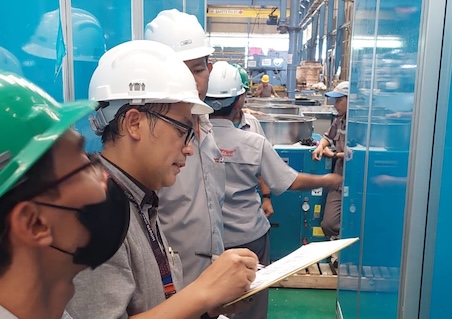In the air conditioning industry, energy efficiency standards play a crucial role in measuring AC performance and guiding consumers towards informed choices. Over time, these standards have continuously evolved to more accurately reflect daily AC usage conditions, especially in warm climates. The shift from Energy Efficiency Ratio (EER) to Cooling Seasonal Performance Factor (CSPF) is a clear testament to the need for a more relevant metric. Let’s delve into the background and three main reasons behind this significant evolution.

Understanding EER and CSPF
Before understanding the shift, it’s important to define EER and CSPF.
EER (Energy Efficiency Ratio) is defined as the ratio of cooling output (in British Thermal Units, BTU per hour) to electrical power consumption (in watts). EER measurements are conducted under artificial and standardized conditions. For instance, for ACs, this is often done at a constant outdoor temperature of 46°C or 35°C, an indoor temperature of 80°F, and 50% relative humidity. The primary limitation of EER is that it only represents efficiency at a single operating point or peak condition, making it less representative of actual performance throughout a cooling season with varying temperatures.
To address the limitations of EER, particularly in hot climates, CSPF (Cooling Seasonal Performance Factor) was developed as a more realistic calculation method. CSPF is defined as the total cooling output removed by the equipment from indoor air when operating for cooling in active mode, divided by the total annual energy consumed by the equipment during the same period. CSPF T3, specifically, was developed by the ISO Refrigeration and Air Conditioning Subcommittee (SC6) for hot climates.
Three Important Reasons for the Evolution from EER to CSPF:
1. EER’s Limitations in Reflecting Real-World Performance
The first and most fundamental reason is the inherent limitation of EER. As mentioned, EER only measures efficiency at a single operating point, specifically at full cooling capacity under very specific and constant temperature conditions. However, in daily use, AC units rarely operate at full capacity continuously, and outdoor temperatures constantly fluctuate. This limitation makes EER less representative of the AC’s actual efficiency throughout the cooling season, especially in areas with significant temperature variations. Consumers relying solely on the EER value might purchase an AC that appears efficient on paper but proves energy-intensive in everyday use.
2. The Need for More Realistic and Comprehensive Metrics (CSPF Development)
To bridge the gap left by EER, CSPF was developed as a far more realistic calculation method. CSPF considers two crucial factors absent in EER:
- Utilization of High Ambient Climate “Weather Bins”: CSPF accounts for varying ambient climate data throughout the cooling season, not just a single nominal temperature. This provides a more accurate picture of how an AC adapts to changing environmental temperatures.
- Partial Capacity Operation: Unlike EER, which only measures at full capacity, CSPF considers how an AC operates at partial capacity. Many modern ACs feature variable speed compressors that allow them to operate at capacities adjusted to demand, making them more efficient at lower loads. The CSPF calculation reflects a more realistic energy efficiency value throughout the cooling season in hot climate conditions.
3. Tangible Benefits of CSPF for Consumers and the Environment
The shift to CSPF brings a number of significant benefits:
- Fairer Comparison: CSPF provides a fairer comparison between equipment based on realistic year-round efficiency. Consumers can make better purchasing decisions by choosing the most energy-efficient AC for their needs.
- Energy Savings & Environmental Impact: Units with higher CSPF values consume less energy, directly leading to lower electricity bills for users. Furthermore, reduced energy consumption means a smaller carbon footprint and lower greenhouse gas emissions, contributing positively to the environment.
- Addressing Hot Climate Gaps: Measurement methods like IPLV, SEER, or ESEER are used in other markets like the US and Europe, but these methods have not been adopted for high ambient or hot climates. CSPF T3 fills this gap, ensuring that AC testing and evaluation are more relevant to the realities of these regions.
Conclusion
The evolution of energy efficiency standards from EER to CSPF is a progressive step driven by the need for greater accuracy and relevance16. CSPF provides a more comprehensive picture of real-world AC performance, especially in hot climates, benefiting both consumers through energy savings and the environment.
As experts in HVAC testing solutions, Satake Fimar Indonesia understands the importance of these latest energy efficiency standards. We are ready to help you understand and meet the complex requirements of AC performance testing. Contact Satake Fimar Indonesia now for further consultation via WhatsApp at +6282310043646.



